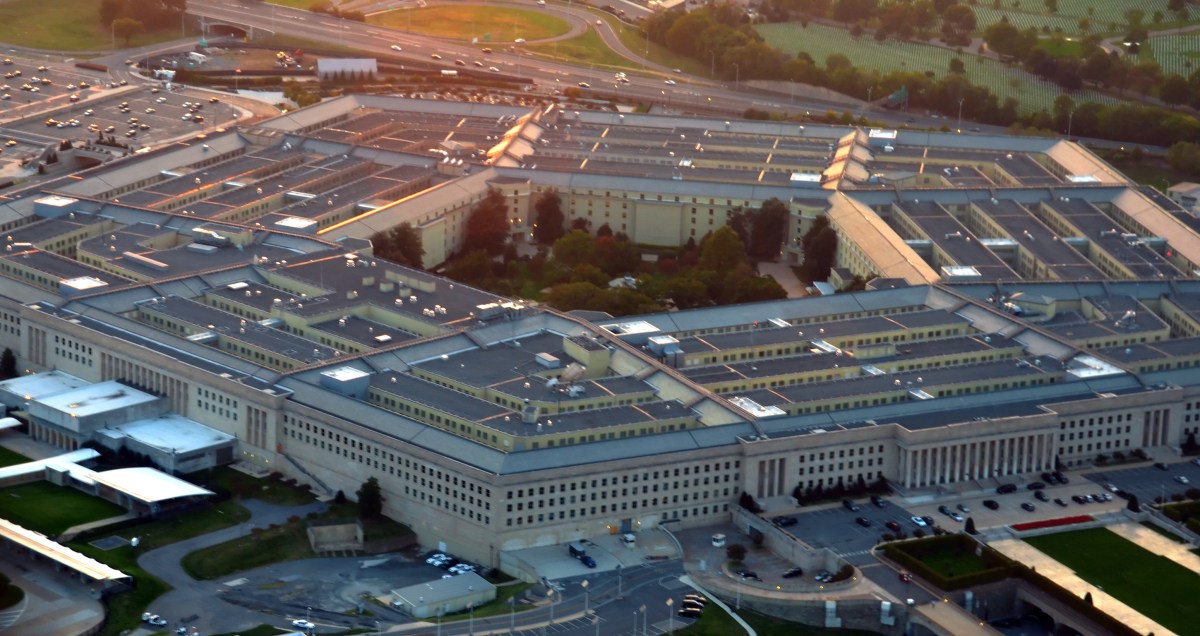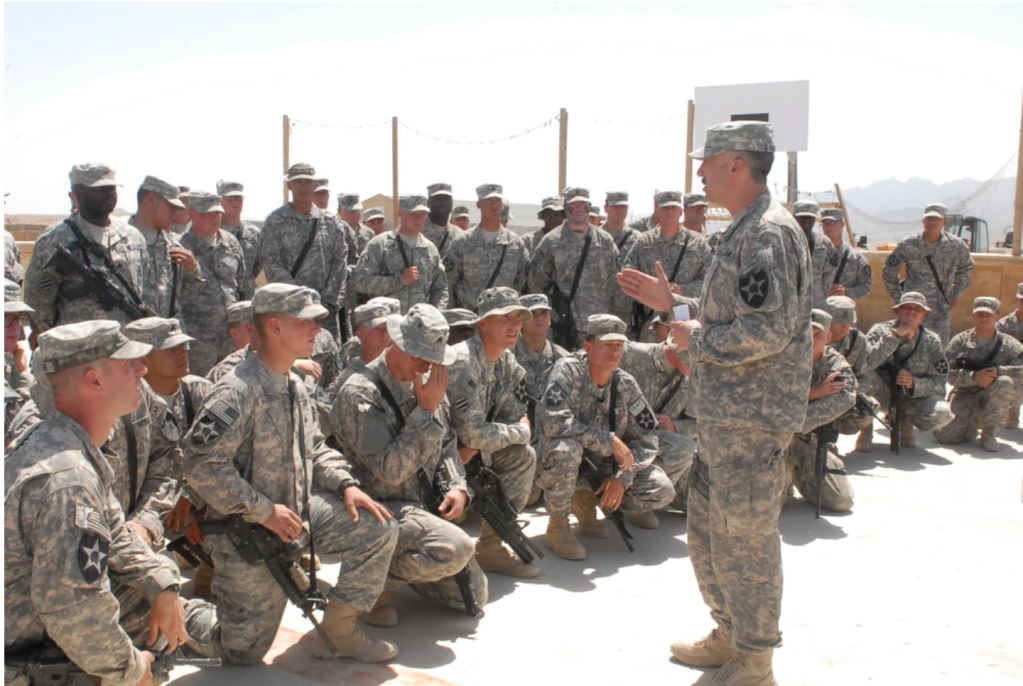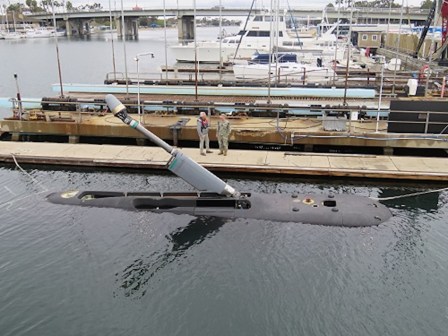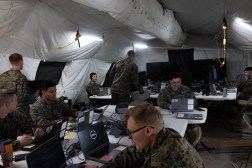Milley’s team readying analysis for establishing new ‘Joint Futures’ organization for DOD

A nascent cross-functional team within the Joint Staff is preparing a comprehensive mission analysis brief to formally propose the creation of a new, first-ever “Joint Futures” organization that could solely focus on priming the Defense Department and military services for uncertain, technology-enabled combat operations in the years beyond 2030.
That team launched under Chairman of the Joint Chiefs of Staff Gen. Mark Milley toward the end of last year to puzzle out complex plans and recommend the right paths forward.
Milley has long been deliberate about helping troops “innovate more like they fight” — meaning, collaboratively — and he was a primary player in the set up of Army Futures Command in 2018 when he was Army chief of staff.
This call for a potentially new entity to unite all the services stems partly from his awareness of the evolving needs — as well as other factors, like a recent direction from the defense secretary to designate a senior advocate for the future joint warfighter.
It’s too early to tell, but if it’s fully realized, “Joint Futures” could end up being a unified command, a new agency, a fresh office within DOD — or something else.
“Every option is still on the table. We’re not predicting or presupposing any single solution other than the argument that we need a senior advocate, and we need an organization focused on the future,” Maj. Gen. Patrick Gaydon, the Joint Futures, J-7 cross-functional team lead, told DefenseScoop in an interview at the Pentagon last week.
The ‘why’
Gaydon served as a battalion commander in an Army Stryker brigade during the war in Afghanistan.
“We were at the cutting edge, I would say, of data. I was responsible for governance development across southern Afghanistan,” he explained.
An expert in geotechnology would “bring data and shape files so that we could overlay them on maps to help make decisions — we started layering information in 2009,” he noted. Most of the data and information captured were not specifically affiliated with the military — but instead was civilian, infrastructure and agricultural information, Gaydon said, “to help quickly be able to make decisions when crises were happening out there.”
“We also used Blue Force Tracker data to create heat maps showing where our combat platforms traveled over time, knowing that the Taliban were watching us. This allowed us to avoid setting patterns and not be easy targets for [improvised explosive devices],” he told DefenseScoop.
It was impactful at the time, “but we were just, like, at the edge of where I think we could go with some of this,” Gaydon said.
Three out of his last four positions in the Defense Department were associated with modernizing the Army. Now, he’s thinking through how to take some of those efforts and implement them on a larger scale across the military. The cross-functional team (CFT) he steers includes five full-time members from the military and DOD, as well as nine part-time subject matter experts.
“The Joint Force of the future has to be able to integrate seamlessly and we’ve got to be able to operate globally. This gets to the ‘why’ of a Joint Futures CFT and the effort — we have to be able to adapt to the changing character of war,” Gaydon said.
“Precision munitions, the speed of hypersonics, artificial intelligence, machine learning, biotech,” he added, “we know that everyone’s going to have access to it. So, it’s really about how do you piece all those together? And it starts with a warfighting concept.”
On that note, the general officer also pointed to “how quickly things are progressing with large language models, neural networks, computer vision, and having machines” to support human decision-making. Commander’s Critical Information Requirements, he noted, inform how military leaders determine choices in operations and potential engagement with enemies.
“I think as we go to the future, much of that will be data-driven,” he said.
Gaydon referenced drafts of diagrams and graphics (viewed by DefenseScoop but not yet ready for public release) during the interview to further articulate apparent “organizational disunity” across the DOD’s timelines for the commands and services, and across products, authorities, processes and forums that are threatening joint force modernization — a key priority in the National Defense Strategy.
“The Joint Warfighting Concept 3.0 has been approved, and there’ll be some more information coming out. It is focused on 2027 to 2030 timeframe,” Gaydon noted.
The DOD’s Joint Requirements Oversight Council (JROC) steers efforts to develop overarching joint operational and integrating concepts. “The JROC looks at requirements. So the idea is that concepts that are validated through experimentation ought to inform requirements, and the JROC validates requirements, really, for about the next 15 years,” he said.
Meanwhile, the services are planning and operating via their own distinct timelines and modernization approaches. “The Army is doing force design out to 2040” and “the Marine Corps is designing the Marine Corps of 2030,” while the “Navy and Air Force are designing out to 2045,” Gaydon noted. He’s also met with members of the Space Force, who he said are “getting all the processes built out — but the budget timelines are shorter.”
“And I don’t know if it jumps out to you,” Gaydon said, pointing to one of the graphics his team created to show the concepts, doctrines, commands and military branches’ coverage in the years ahead through 2045. “The services are out here [with plans into the 2030s] and the Joint Force is not,” Gaydon noted.
Much will have to be worked out, but right now he envisions that for the Joint Futures organization “concepts and experimentation would be the focus.”
Officials within it, for example, would develop next-generation concepts for flight — “and I say that in plural because there could be multiple futures that we consider in how we would fight,” he noted.
Broadly, the current idea is that the organization could first generate concepts and conduct rigorous experimentation to prove that the concepts work for how the joint force could fight in the future. Once validated, the concept would get moved into requirements and fed into JROC. Then, “it gets integrated across all of DOTMLPF-P,” Gaydon said, referring to doctrine, organization, training, materiel, leadership and education, personnel, facilities and policy — which is DOD’s framework for considerations that must be made prior to undertaking new efforts.

“As part of our planning, I think due diligence says that there could be joint problems that aren’t being solved. And, inherently, joint services are very good at developing lethal weapons and a whole bunch of other things — but are there other problems that you can’t hand to a service to solve? You know, resilient C4, AI, integration-type things that could call for some of this,” Gaydon said.
Further, Defense Secretary Lloyd Austin also recently called for a senior authoritative advocate for the future joint warfighter.
“We think [that person] would be the leader of this organization, if we stand it up,” Gaydon said. “Part of the argument is that we need a senior leader — we won’t even say what rank that leader would be — but someone that’s solely focused on thinking about how we can do what the [National Defense Strategy] tells us in that deep timeframe.”
“[They] would be the voice for the future joint warfighter, with a seat in Pentagon decision forums. He or she would be positioned to create a ‘unity of effort,’ informing force design and future capability development across the joint force. We see the need for an enduring, unified solution for future joint force design and a permanent and constant advocate for the future joint warfighter,” he also told DefenseScoop.
His team is “digging into the authorities that exist and whether new authorities would be needed.” At this point, “we’re not sure they would,” he added.
Throughout the interview, Gaydon emphasized repeatedly that the cross-functional team is very early in the planning cycle on this possible new role.
“Nothing has been decided. Everything I’m giving you is hypotheticals that we’re considering and planning,” he said.
Lots of ‘ifs’
The envisioned organization would help align the Joint Staff, combatant commands and the services on timelines, products, processes, forums and capabilities far into the future, according to Gaydon.
“It’s kind of hard, because I don’t know exactly what this [potential] organization is going to be. But I know enough to say what it probably isn’t going to be,” he explained.
Like Army Futures Command, the organization could potentially steer the development and refining of technology experiments and operational concepts for the joint force.
However, “the Army fully takes the concept into requirements. We don’t know if this organization would write requirements or not — but we’re working through that,” Gaydon said. He also noted that the overarching “idea is this organization would be a small, agile headquarters organization” staffed with up 500 officials, based on the present planning estimates.
If the organization is a command, the official would report to the defense secretary. If it’s “some sort of reform on the Joint Staff,” Gaydon said, “it would definitely report through the chairman.”
“If it is an agency or some other office, there would be different permutations to it,” he noted.
Right now, Gaydon’s team is in the mission analysis phase of planning. Once approved to move into the next phase, the cross-functional team would expand. From there, with approval from the defense secretary, they’d develop those courses of action. When those are then approved by DOD leadership, they would move on to puzzling out stationing decisions, manpower analysis, functional analysis, figuring out the budget — and potentially create a proposal for legislative change.
Eventually, “we will have to talk to Congress — we’ve not updated them up to this point,” Gaydon noted.
He could not share any details about the timeline the cross-functional team is operating on.
In this very initial planning phase, they’re largely trying to build consensus and garner feedback from DOD leaders, the Joint Staff, combatant commands and other elements across the military.
“I’ve engaged at a very high level, saying, ‘We need something like this, or we’ll be on the wrong side of history,’” Gaydon noted.
“I welcome skepticism — and I’ve gotten some of that — because it helps us relook things and put more rigor into the planning,” he said.






